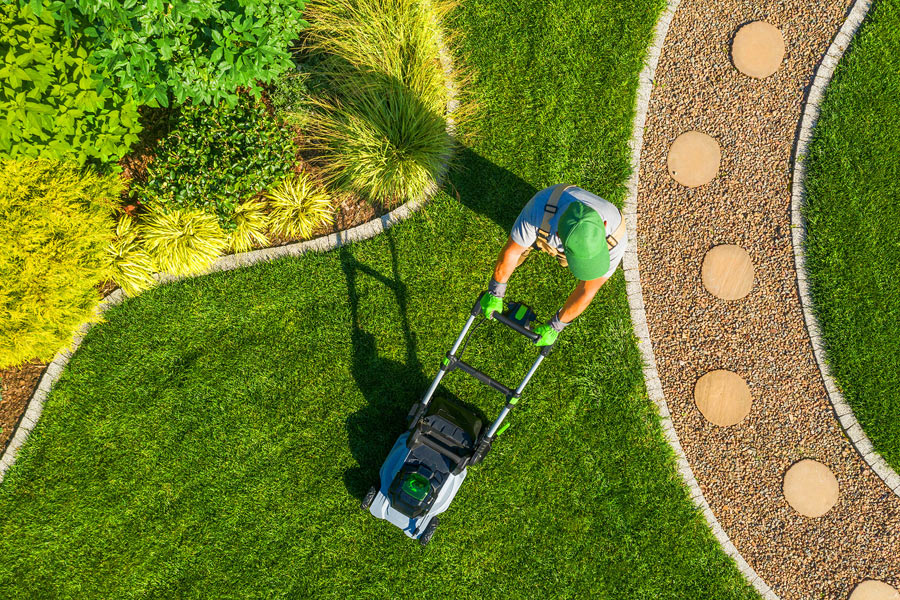Summer is the time when your lawn gets to shine, basking in the warm sun. But with great weather comes great responsibility. Proper summer lawn care is essential for maintaining a lush, green landscape that can withstand the season’s heat. Here are seven crucial tips to ensure your grass stays healthy and vibrant all summer long.
Understanding Summer Lawn Needs
Grass Types and Climate Considerations
First things first: not all grass types are created equal. Some thrive in the heat, while others may struggle. Warm-season grasses like Bermuda, Zoysia, and St. Augustine are ideal for hotter climates because they are drought-tolerant and robust in high temperatures. Knowing your grass type and understanding your local climate will help tailor your lawn care practices for optimal health.
Watering Guidelines
Watering your lawn correctly during summer is crucial. Aim to water deeply and infrequently to encourage deep root growth. Early morning watering is best to minimize evaporation and fungal growth. Look for signs of under or overwatering, such as wilting or yellowing leaves, and adjust your watering schedule accordingly. If you see your lawn turning brown, it might be time to re-evaluate your watering strategy.
Lawn Mowing Best Practices
Ideal Mowing Height
Mowing height is more critical than you might think. During summer, keep your grass a bit longer to shade the soil and reduce water loss. For most warm-season grasses, maintaining a height of about 2.5 to 3 inches is ideal. Taller grass also helps crowd out weeds, so it’s a win-win.
Mower Maintenance
Your lawn mower is your best friend during summer, so keep it in top shape. Regularly sharpen the blades to ensure clean cuts and prevent tearing the grass, which can make it more susceptible to disease. Clean the mower deck to prevent clippings from clogging and affecting performance. Regular maintenance will make your mowing sessions more efficient and effective.
Fertilizing and Soil Health
Summer Fertilization Schedule
Fertilizing in summer can be tricky. Too much fertilizer can burn your lawn, but the right amount will keep it green and healthy. Use a slow-release fertilizer to provide consistent nutrients without the risk of burning. Late spring or early summer is the best time for fertilization, but avoid doing it during peak heat waves.
Soil Aeration
Compacted soil can be a silent lawn killer. Aeration helps alleviate soil compaction, allowing water, nutrients, and oxygen to penetrate deeper. Summer is a good time for light aeration, especially if you notice water pooling or your lawn looking patchy. Use a garden fork or an aerator to make holes in the soil, enhancing its overall health.
Weed Control Strategies
Preventative Measures
Weeds can quickly take over if left unchecked. Regularly inspect your lawn for weeds and remove them promptly. Using a pre-emergent herbicide in late spring can prevent many summer weeds from germinating. Keep your lawn thick and healthy to naturally crowd out weed growth.
Safe and Effective Herbicides
When it comes to herbicides, safety first. Choose products labeled as safe for your grass type and follow application instructions carefully. Spot-treating weeds with a targeted herbicide can be effective and minimize chemical use. Remember, overuse of herbicides can harm your lawn, so apply judiciously.
Dealing with Summer Lawn Pests
Identifying Common Pests
Summer is prime time for lawn pests like grubs, chinch bugs, and armyworms. Regularly check your lawn for signs of pest damage, such as brown patches or chewed blades. Early detection is key to preventing a small problem from becoming a full-blown infestation.
Natural Pest Control Methods
Integrated Pest Management (IPM) strategies can help control pests sustainably. Introduce beneficial insects like ladybugs and nematodes to your lawn—they naturally prey on common pests. Consider using organic pest control products that are safe for pets and the environment.
Shade and Sunlight Management
Creating Shade
Excessive heat can stress your lawn. Creating shaded areas can protect it from the harsh midday sun. Planting trees, installing pergolas, or using shade sails can provide relief for sun-sensitive areas. Not only will this protect your grass, but it can also create cool, inviting spots in your garden.
Sunlight Requirements
Balancing sunlight exposure is crucial. While some grass types need full sun, others thrive in partial shade. Ensure that each part of your lawn gets the appropriate amount of sunlight by adjusting your landscaping. Move container plants, trim overgrown bushes, or adjust the placement of garden features to optimize sunlight distribution.
Lawn Maintenance During Heatwaves
Heat Stress Prevention
Heatwaves can be brutal on your lawn. Water deeply early in the morning to help your grass cope with extreme temperatures. During peak heat, consider temporary measures like using shade cloths or reducing foot traffic to prevent additional stress. If your lawn starts to wilt, it’s a sign it needs some TLC.
Conclusion
Summer lawn care requires a proactive approach to keep your grass green and healthy. By understanding your lawn’s needs, maintaining proper mowing and watering routines, and using eco-friendly practices, you can ensure a vibrant lawn even during the hottest months. Remember, a little extra effort now can lead to a lush, resilient lawn that you can enjoy all summer long. Implement these tips and watch your lawn thrive!



